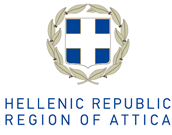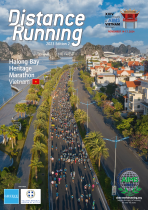Running into history Mainova Frankfurt Marathon
01 October 2011, 7am
Storming through
The BMW Frankfurt Marathon, celebrating its 30th edition on 30 October, has made an amazing comeback over the last few years.
Just a short while ago Germany’s oldest city marathon had slipped down the national pecking order behind Berlin, Hamburg and Cologne. But today it is breathing down Berlin’s neck in terms of international importance. Few other races anywhere have turned themselves around so effectively as Frankfurt has done in the past eight years.
This year’s race in Germany’s financial capital will likely become another record breaking event. In terms of elite performances Frankfurt is now among the fastest marathons in the world. It has comfortably attained the requirements for IAAF Gold Label status since 2009. The world class times are one thing, but it is equally important that the mass event continues to grow. This year a record 14,000 entries are expected.
The story of the BMW Frankfurt Marathon began back in 1981, when Germany’s first three major city races took place. Two of them were in May: The 25km in Berlin and the Frankfurt Marathon. In September the Berlin Marathon staged its first city edition after having held the first seven races effectively hidden away from public gaze on the traffic-free roads of the Grunewald forest.
In Frankfurt there was no predecessor that had been staged in a park or a wood: the very first marathon blazed its trail through the city. It was a great challenge for the organisers, but they had the support of a major German chemical company: Hoechst is based in Frankfurt and a district of the city is even named after the company. Hoechst also has its own sports club (OSC Hoechst) and in the years leading up to the first Frankfurt Marathon there were around 130 runners competing for the club nationally and internationally. At some point they decided that they should stage a race themselves, and agreed that it had to be one for both elite runners and fun runners.
An organisation was founded with the help of Hoechst. The company became the title sponsor, providing not only a large cash budget but also staff and materials. Wolfram Bleul became the first race director. On 17 May 1981 the legendary Czech Olympic hero Emil Zatopek started the first marathon next to the Hoechst factory. The race had 3,169 entries and 2,588 finishers. It also generated a political scandal because two South African elite runners had been invited to the race although at that time Apartheid South Africa was banned from international sport. The German athletics federation intervened but the organisers still allowed them to run “unofficially”, without race numbers. Despite the controversy the story after the race was the successful launch of the Hoechst Frankfurt Marathon as Germany’s first mass city marathon. Around 150,000 spectators had turned up to cheer on the runners.
Sweden’s Kjell-Erik Stahl won in a time of 2:13:20.
In 1982 entries were up to 5,529 and the winning times also improved in the following years. Germany’s Charlotte Teske produced the first sub 2:30 performance of 2:28:32 in 1983, setting a national record. In the men’s race in 1984 Ethiopia’s world-class runner Dereje Nedi clocked 2:11:18. It was a German all-comers’ record improving Frank Shorter’s winning time of 2:12:19 in the 1972 Munich Olympics.
In 1986 Hoechst withdrew support, and the Marathon that year was cancelled – that is why the 30th edition is this year. The undoubted success of the young Frankfurt Marathon led to a new organisation being formed, with the city government being much more involved for many years to come. The sixth edition of the Frankfurt Marathon was held in 1987 on a new course. The race had a succession of national winners in the 1990s – among them Katrin Dörre-Heinig, Luminita Zaituc and Herbert Steffny – but compared to the marathons in Berlin or Hamburg it could no longer keep pace. While Berlin produced sensational results and even world records during these years in Frankfurt they were still waiting for the first sub 2:10 time. After a great start in the early 1980s by the turn of the millennium Frankfurt had fallen behind.
With the City of Frankfurt in charge the political decision to appoint a new organiser became the basis on which to things to turn around. Jo Schindler had successfully developed a marathon in his home town of Regensburg (Bavaria) and was eager for the challenge of transforming the Frankfurt Marathon into a world-class event. This was something that looked highly unlikely back in 2002, at the time of his appointment, but the new race director used local knowledge and also brought in expertise from elsewhere. Petra Wassiluk, for example, the former German elite distance runner, is one of Jo Schindler’s closest partners in the organising team.
“After the 2002 race we analysed everything before starting to change things. It was our goal to position the Frankfurt Marathon as a first-class elite race and at the same time as a marathon that offers outstanding service for fun runners,” explains Schindler. One of the first major changes was the repositioning of the finish. Since 2003 Frankfurt’s finish line has been indoors, in the “Festhalle’. “We had to offer something really emotional, because the marathon is an emotional event,” says Schindler, who also significantly improved the contents of the goody bags. For this 30th anniversary edition every runner will receive an Asics backpack. Aspects like the pasta party and hot water showers in the finish area were all comprehensively revamped. In a rigorous redesign Schindler also jettisoned the inline skating event: “we wanted to give centre stage to the marathon runners” he said. The changes and investments paid off. “We have reached entry figures of which we could only have dreamt when we took over in 2002,” says Schindler.
For the 2003 race Schindler brought in a new elite athlete coordinator, Christoph Kopp, who had originally developed the Berlin Marathon into a world-class race and had already helped Schindler in Regensburg. He had immediate success as the 2:10 barrier was finally broken in Frankfurt with Kenya’s Boaz Kimaiyo clocking 2:09:28. Since that race there has not been any male winner who has run slower than 2:10. Year by year Frankfurt’s course record became faster and faster. Times improved so strongly that today a 2:08 finishing time would be regarded as a great disappointment. The course has been improved and made faster times more attainable, but the main change is that the race is now attractive for the best runners in the world.
In the past four years the men’s course record has been broken in each race. It has improved from 2:08:29 (2005) to 2:04:57. In 2007 Wilfred Kigen ran 2:07:58; a year later Robert K. Cheruiyot clocked 2:07:21; then Gilbert Kirwa finished in 2:06:14 and in 2010 Wilson Kipsang returned an amazing 2:04:57. It was then the tenth fastest marathon time ever run. The average of the ten fastest men’s times now is 2:06:53.5 and this currently puts Frankfurt in ninth place in the list of the fastest marathons in the world. In 2010 the women’s course record was also smashed as Caroline Kilel (Kenya) took the race with 2:23:25. A record number of 12,475 runners from 76 nations had entered the event.
With the BMW Frankfurt Marathon storming through so fast into the top rank of world marathons, one might ask: what is next? Can it get any better at this year’s jubilee race? The organisers obviously think so, because they will offer a world record bonus for the first time in the history of their event.
More information and online entry is available at: www.bmw-frankfurt-marathon.com







